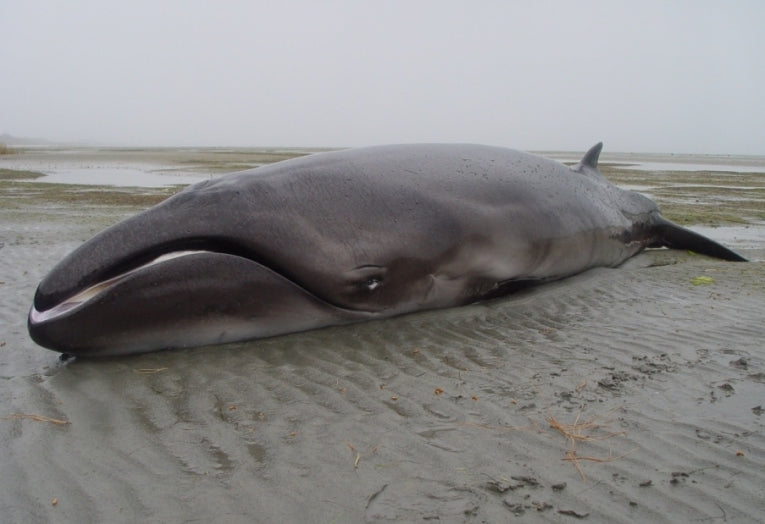Of all the cetaceans in the sea, the pygmy right whale, Caperea marginata, which isn't a right whale at all, is likely to be the least seen. Small, rarely hunted or beached, it lives around the latitudes of Australia, South America and South Africa. R. Ewan Fordyce and Felix G. Marx of New Zealand's University of Otago, in Dunedin, have now placed the species in the previously-thought "extinct" family Cetotheriidae.
As the smallest, most cryptic of the baleen whales, its biology is nowhere near as well-known as the other whales. It has an unusual skeleton now seen, with the help of New Zealand collections, to resemble the Cetotheridae, instead of the rorquals or the right whales. Unfortunately, there is virtually no fossil record of this species or the Cetotheres, to which it now seems to belong. The estimate is that, at least 9 million years ago, this little whale speciated from the now-extinct cetotheres and has survived ever since! Several other whales and dolphins are in this rarely-spotted category, but this unique little species should really be appreciated more.
The evidence presented by the authors in todays' Royal Society B: Biological Sciences is extensive. At least 166 morphological characters have been identified as unique to the species and its unique group. An extinct cetothere called Herpetocetus has a quite similar skull and ear bones. The very different Physeter, the sperm whale (highly unlikely relative, being a toothed whale) and Balaenoptera bonaerensis, the Antarctic minke whale are also compared and dismissed as near relatives.
That honour would have gone to Herpetocetus with what the authors call a long "ghost lineage" from way back in the Oligocene or Early Miocene. That's an epic time of 17.6 to 26 million years. The other cetotheres became extinct by the end of the Pliocene, if we believe the molecular clock results. Without any fossils, we may never know. We can be very glad to have this creature, still alive, because the whalers found it wasn't the "right whale" but it was too small for them and far too clever to be found! More good news - there is a suspected fossil of Herpetocetus waiting to be described in Baja California, Mexico.
Let's hope it will reveal more secret links to this wonderful living legend of the Southern Ocean.










